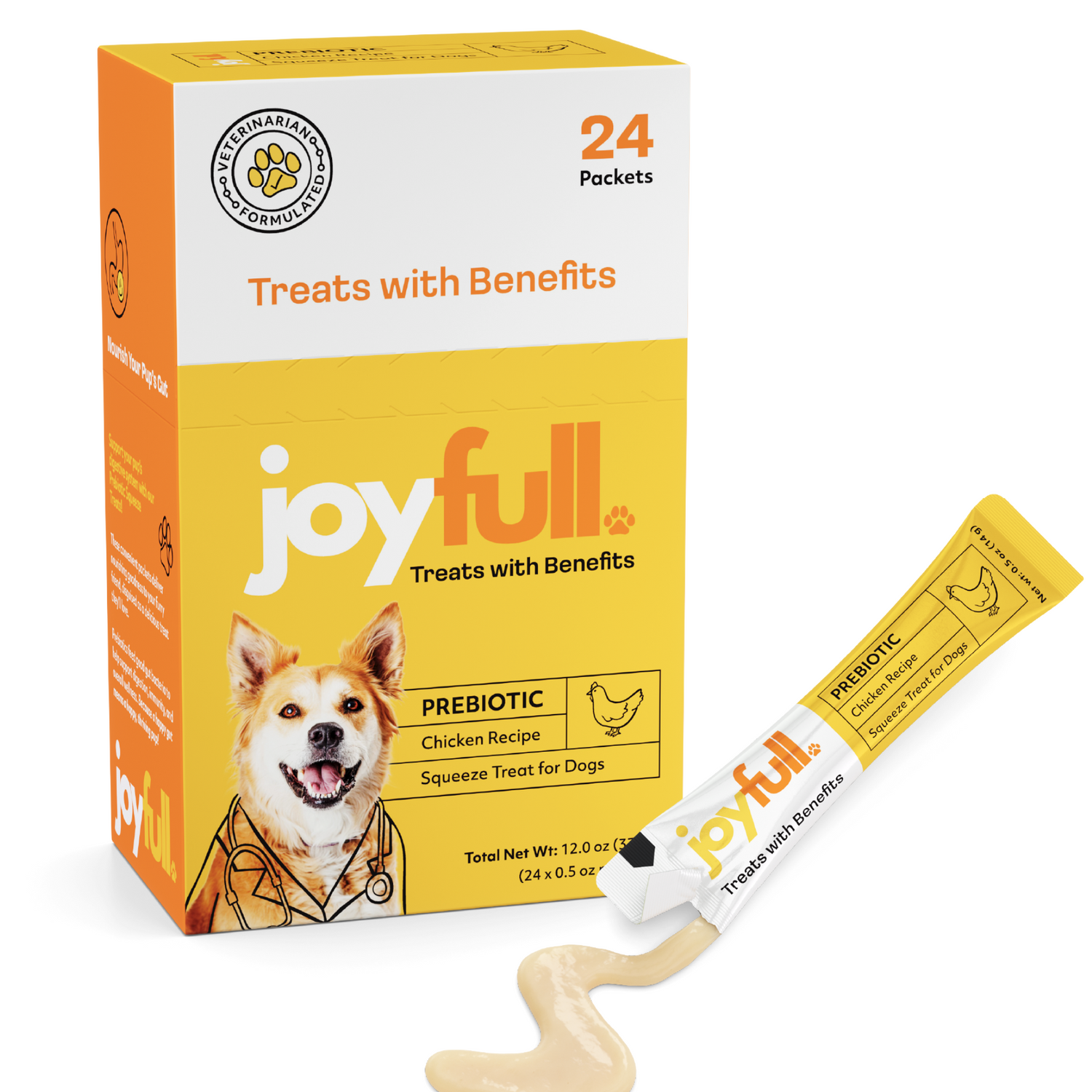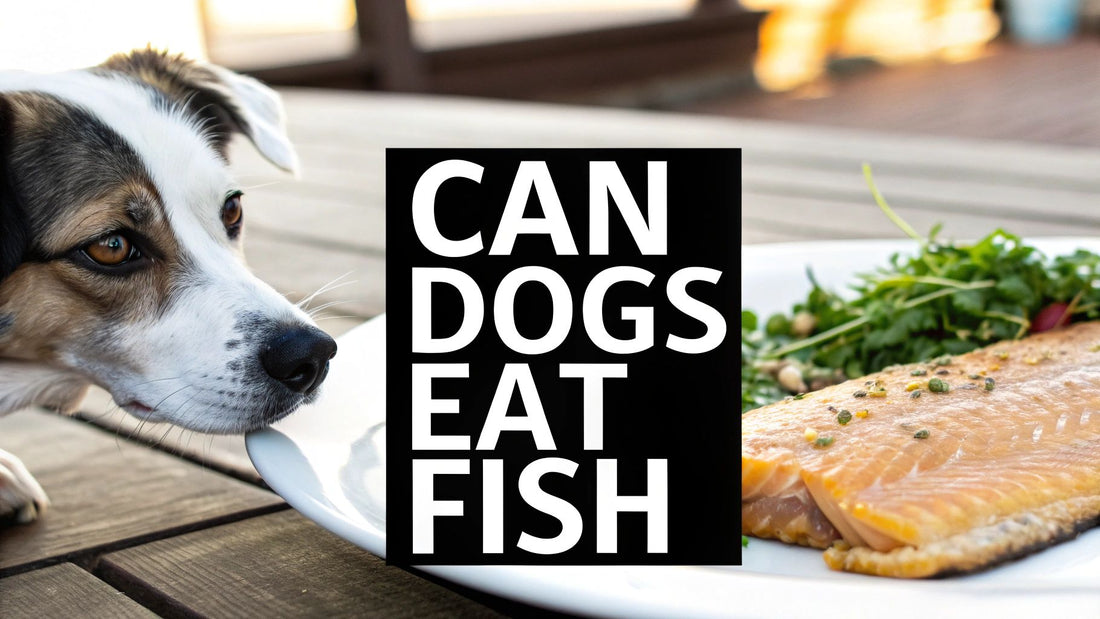
Can Dogs Eat Fish? Safe Tips & Benefits Explained
Yes, dogs can absolutely eat fish. In fact, it can be a fantastic addition to their diet, packed with omega-3 fatty acids that do wonders for their coat, skin, and joints. But it's not as simple as tossing them a piece of whatever you're having for dinner.
The Simple Answer: Yes, With a Few Key Rules
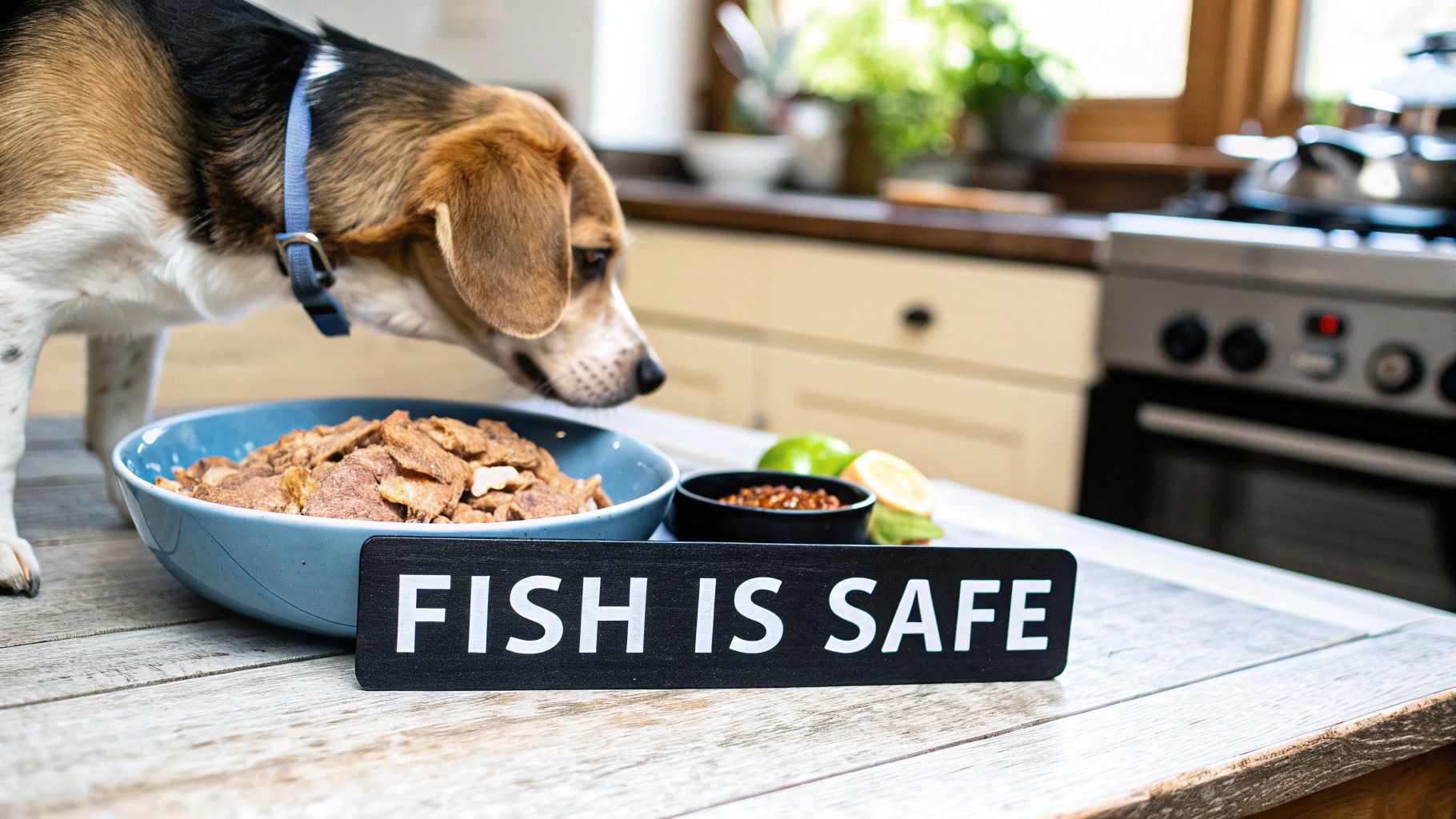
The best way to think about it is to treat your dog like a picky toddler when it comes to fish. You need to be mindful of how it's chosen and, most importantly, how it's cooked. Getting this right is the key to unlocking all the benefits without any of the risks.
This guide is designed to walk you through everything, step-by-step. We're going to cover all the essential ground so you can feel confident and informed.
Here’s what we’ll dive into:
- The incredible nutritional perks fish offers for their health and energy.
- The hidden dangers you need to know, like tiny bones, mercury, and nasty parasites.
- A breakdown of the safest and best fish species to feed your pup.
- Simple, safe cooking methods and how to figure out the right portion size.
By the time you're done reading, you'll have all the know-how to make fish a safe, healthy, and delicious part of your dog's diet.
What Makes Fish So Good for Dogs, Anyway?
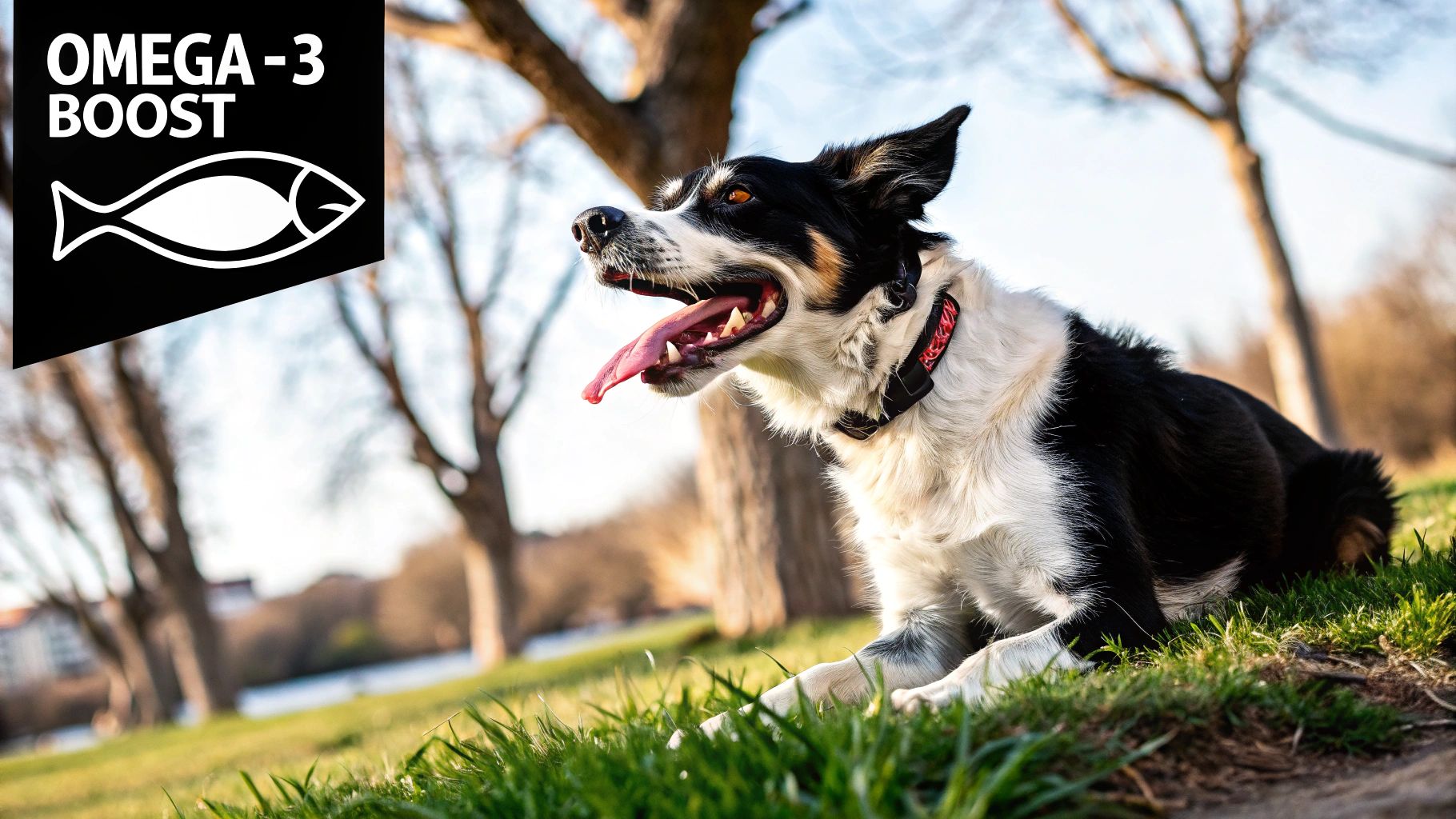
When we think of fish for dogs, it's easy to see it as just another tasty treat. But honestly, it's a real nutritional powerhouse. It’s loaded with top-notch protein that's easy for them to digest. This makes it a fantastic go-to for dogs who might be a bit sensitive to more common proteins like chicken.
If you're curious about different protein options, we have a whole guide on the best protein sources for dogs.
But the real game-changer here is the incredible amount of omega-3 fatty acids. Think of these as a natural, built-in anti-inflammatory. They work wonders for soothing the achy joints of an older dog and can bring real relief to itchy, irritated skin.
And for the little ones? Omega-3s are absolutely crucial for healthy brain development in puppies.
The specific omega-3s found in fish like salmon and herring have been shown time and again to improve joint mobility and give dogs that healthy, shiny coat we all love to see. You can dive deeper into the science with more insights about fish-based pet nutrition.
The Fishy Side of Things: Risks and What to Avoid
Just because fish can be a fantastic addition to your dog's diet doesn't mean you can grab any fillet from the counter. Some types of fish come with serious risks, and knowing what to look out for is crucial to keeping your pup safe.
Think of it this way: the bigger the fish and the longer its lifespan, the more time it has to accumulate toxins from its environment. This is especially true for heavy metals like mercury.
The Big Three Dangers
When it comes to feeding fish, there are three main culprits you need to be aware of:
-
Heavy Metals: Large, predatory fish that are higher up the food chain—like tuna, swordfish, and king mackerel—tend to have higher concentrations of mercury. Over time, this can build up in your dog's system and lead to mercury poisoning.
-
Parasites: This is a big one, especially with raw fish. Raw Pacific salmon, for instance, can harbor a parasite that causes "salmon poisoning disease." It sounds scary because it is; this condition can be fatal if not treated quickly.
-
Thiaminase: This is an enzyme found in certain raw fish (like carp and herring) that destroys thiamine, an essential B vitamin. A thiamine deficiency can lead to serious neurological problems for your dog.
This quick guide highlights the key things to watch for.
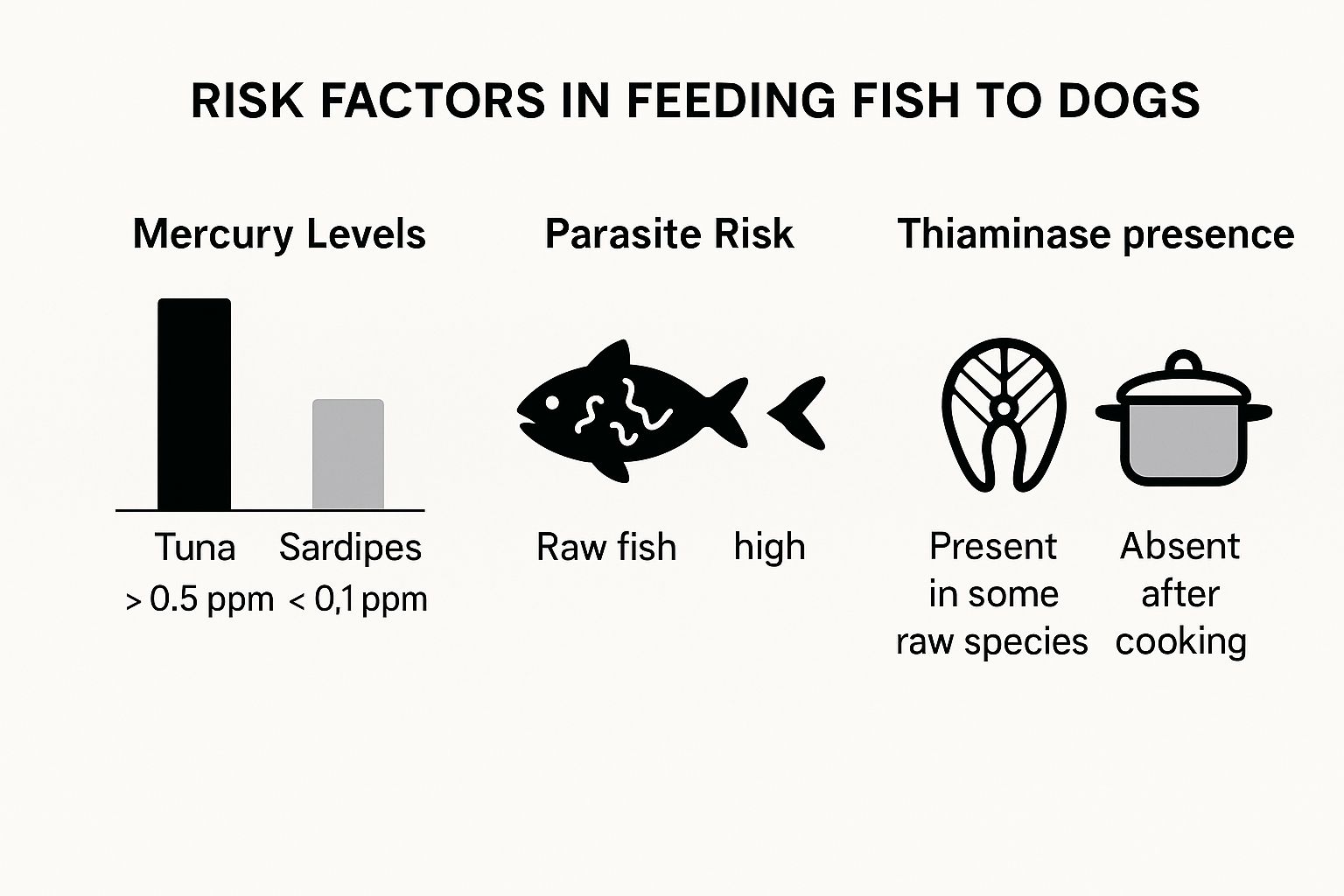
The takeaway here is pretty clear. Sticking to smaller, properly cooked fish is by far the safest route and dramatically lowers these risks.
Choosing The Best Fish and Preparing It Safely
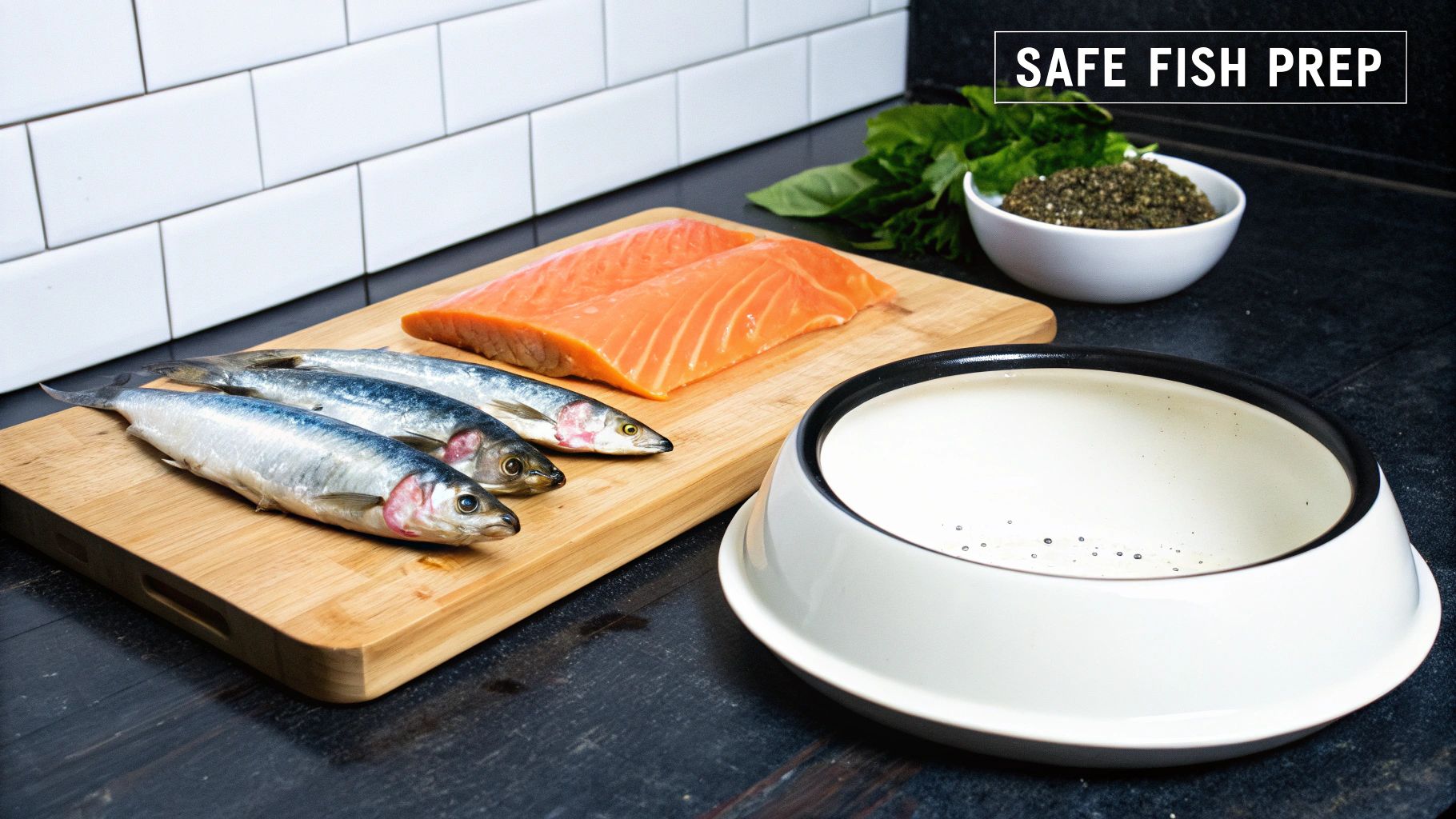
When you're thinking about adding fish to your dog's diet, the two most important things to get right are the type of fish you choose and how you prepare it. It really does make all the difference.
What Kind of Fish Is Best?
A good rule of thumb is to go for small, oily fish. Think salmon, sardines, or herring. These little guys are fantastic because they're absolutely swimming in those healthy omega-3 fatty acids we want, but they're naturally low in mercury. Larger, long-living predatory fish tend to accumulate more mercury, so it's best to steer clear of those.
Safe Preparation Is Key
Cooking fish for your dog should be simple. The best ways to do it are by steaming or baking it plain, with absolutely nothing added. No oils, no butter, and definitely no seasonings. Things we love, like garlic and onion, are actually toxic to dogs.
The most critical step is to thoroughly debone the fish after cooking. Cooked bones become brittle and can pose a serious choking risk or even cause internal damage.
If you're short on time, canned fish can be a great alternative. Just make sure you grab the kind packed in water, with no added salt.
And if you're making a homemade fish-based meal, portion control is important. Getting the serving size just right can be tricky, so it helps to have some tips on how to scale a recipe handy.
Safe Fish for Dogs A Comparison
To make things even easier, here’s a quick comparison of some of the best and safest fish options for your dog.
| Fish Type | Key Benefits | Mercury Level | Best Served |
|---|---|---|---|
| Salmon | Rich in Omega-3s, great for skin and coat | Low | Cooked (baked/steamed), deboned |
| Sardines | Excellent source of calcium and Omega-3s | Very Low | Canned in water, no salt added |
| Herring | High in Omega-3s, good source of Vitamin D | Very Low | Cooked (baked/steamed), deboned |
| Cod | Lean protein, low in fat | Low | Cooked (baked/steamed), deboned |
This table gives you a snapshot of why these choices are so popular among dog owners. They pack a nutritional punch without the high risk of heavy metals found in other species.
How Much Fish Can I Give My Dog?
When it comes to treats, fish included, moderation is key. A great rule of thumb that veterinarians often suggest is the "10% rule."
It’s a simple concept: any extras you feed your dog shouldn't account for more than 10% of their total daily calories. The rest of their nutrition should come from their balanced, everyday food.
What does this look like in practice? For a little Chihuahua, that might just be a tiny flake of salmon. A big Golden Retriever, on the other hand, could enjoy a much more generous slice. If you're unsure about your dog's daily needs, using a dog food portion calculator can give you a solid baseline to work from.
Always introduce new foods gradually. Start with a tiny piece of fish and keep an eye out for any tummy troubles or signs of an allergy. This slow-and-steady approach helps ensure fish stays a happy, healthy part of their diet.
Finding Fish in Your Dog's Commercial Food
Don't want to play chef? That's okay. You don't have to prepare fresh fish from scratch for your dog to get all the amazing benefits.
Plenty of top-notch commercial dog foods already use fish, especially salmon, as a star ingredient. Food makers love it because it's packed with those healthy omega-3s and often works wonders for dogs who are sensitive to more common proteins like chicken or beef.
The trick is knowing how to spot the good stuff on the shelf. This is where learning how to read dog food labels becomes a superpower for any pet parent. It helps you cut through the marketing fluff and find a fish-based food that actually delivers the nutrition your dog needs.
Ever wonder why some fish-based dog foods cost more than others? It often comes down to the complex journey from the ocean to your dog's bowl. The price and availability of fish can swing wildly due to market forces. For instance, shifts in the demand for a species like spiny dogfish can ripple through the entire pet food industry, as detailed in this analysis of the spiny dogfish market.
Got Questions About Dogs and Fish? We've Got Answers.
We've gone over a lot of ground, but you might still have a few questions floating around. That's completely normal.
This is where we'll tackle some of the most common things people ask about feeding fish to their dogs. Think of it as a quick-reference guide for everything from fish skin and bones to whether that can of tuna is safe to share. Let's clear up any lingering concerns so you can feel great about your choices.
